Editorial
Muck, bucks and impunity – II
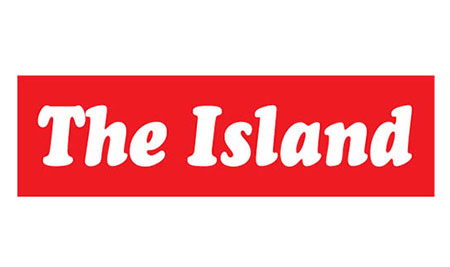
Wednesday 30th December, 2020
Importers who find themselves on the wrong side of the law have to face legal action. Most of them have to pay heavy fines. But, strangely, those who imported hazardous foreign waste have gone scot free to all intents and purposes. Only 21 out of 263 shipping containers of British garbage including hospital waste, brought here in 2018 and 2019 have been shipped back to the UK.
Legal action has not yet been taken against the importers of British waste, according to a news item in yesterday’s edition of this newspaper, quoting Director of the Sri Lanka Customs Sunil Jayaratne. He has claimed that COVID-19 has delayed the investigation, and the police will be called in to assist the Customs in conducting the probe.
The Customs, no doubt, deserve praise for refusing to release the containers of foreign rubbish. But, why they have not taken legal action against the errant importers of rubbish is the question. The pandemic cannot be blamed for the delay in the investigation into the foreign waste imports. The law becomes a sparrow when offenders happen to be Opposition politicians or activists; it is a snail when the transgressors happen to be moneybags with links to the powers that be. The signs are that the waste importers are trying to derail the probe.
The police have earned notoriety for being a pliable tool in the hands of the politicians in power. They conduct most investigations at a politically determined pace and invariably baulk at taking action against those shielded by the ruling party. Thus, it is doubtful whether they will act independently and help institute legal action against the importers of foreign waste.
The Central Environmental Authority (CEA), too, has also not taken action against the company that imported British waste. Environment Minister Mahinda Amaraweera, contacted by this newspaper for comment, has trotted out some lame excuses and promised action. He has evinced a keen interest in protecting the environment and cannot be held responsible for the waste imports under the previous government, but has to ensure that the CEA carries out its duties and functions properly.
The failure on the part of the Customs and the CEA to take action against the importers of British garbage may have emboldened others to import agricultural waste from Ukraine. At this rate, there will be no end to waste imports.
Issues crop up at such a pace in this country that neither the public nor the media can keep track of them properly. New issues eclipse old ones, which cease to interest anyone with the passage of time. It looks as if the consignment of hazardous foreign waste is being kept at the Colombo Port until the issue fades into oblivion so that it can be taken out and disposed of. Or, perhaps, the waste may disappear with empty containers sitting in the port premises. Anything is possible in this country. Time was when a prominent politician was accused of having swallowed a ship whole under the JRJ government. Lamborghinis that used to roar down the city streets disappeared into thin air following the 2015 regime change. The yahapalana government even carried out excavations in some parts of the country in search of those expensive cars, but in vain. So, the possibility of the British and Ukrainian waste disappearing in a similar manner cannot be ruled out.
Environmentalists and the media should take up the foreign waste issue again and flog it hard to crank up pressure on the Customs and the CEA to take legal action against the culprits expeditiously.
The incumbent government bellows its one-country-one-law slogan to the point of queasiness, but the importers of hazardous waste remain above the law for all practical purposes.
Editorial
A sickening game of chicken
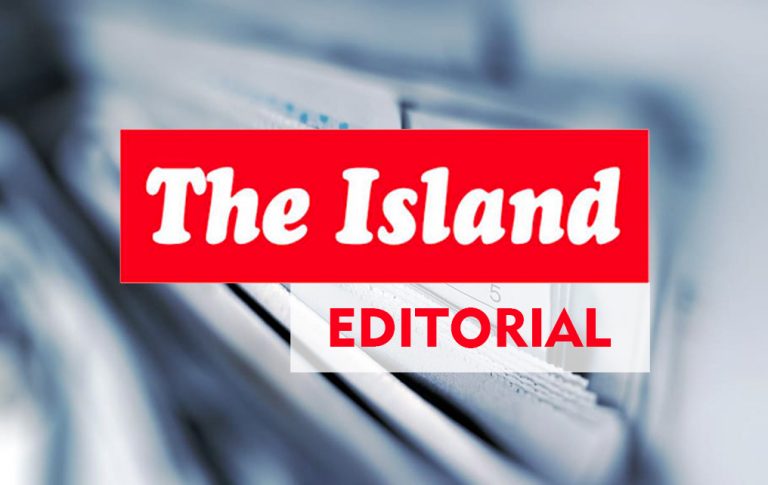
Wednesday 19th March, 2025
Some health sector trade unions launched a 24-hour strike yesterday, aggravating the suffering of the sick who visited the state-run hospitals seeking treatment. The protesting workers have said they were left with no alternative but to resort to trade union action as the Health Ministry had not heeded their grievances, the main being that their take-home salaries will decrease despite the government’s claim that it has granted them pay hikes.
A strike in one sector tends to have a domino effect on others, and trade union disputes have the potential to snowball. It will therefore be prudent for the government to address the root causes of the health sector labour struggles expeditiously. Health Minister Dr. Nalinda Jayatissa has, in his wisdom, opted for a game of chicken, hoping that the trade unions on the warpath will back down. Ironically, some pro-government trade unions which were accused of resorting to unfair industrial action, while the JVP was in the opposition, are berating the health sector strikers!
The government has asked the protesting health workers not to hold patients to ransom. Its call will resonate with the ordinary people dependent on free healthcare, but it will have to do much more if the problem at hand is to be solved once and for all. Ideally, vital sectors such as health should be free from strikes, but the governments do not take action to redress workers’ grievances unless trade unions resort to industrial action.
Most of the protesting trade unions backed the NPP in the last two elections, believing in the latter’s promises. Many Sri Lankans, including state employees, ‘barter’ their votes for the benefits promised by political parties in the run-up to an election. Problems occur when governments fail to fulfil their pledges after being ensconced in power.
President Anura Kumara Dissanayake, before presenting the NPP government’s maiden budget in Parliament, promised ‘unprecedented pay hikes’ for all public employees. When he, in his capacity as the Minister of Finance, announced salary increases through Budget 2025, it was made out to be a generous gesture, but the health sector trade unions are of the view that it was just a sleight of hand. The government succeeded in having a doctors’ strike put on hold by promising to effect changes to the budget during the committee stage to sort out issues pertaining to their salaries. The doctors will resume their trade union action unless the government fulfils its pledge. The government will be in trouble even if it manages to resolve the doctors’ pay issues, for other trade unions will demand that their grievances be redressed in a similar manner.
The NPP government is in the current predicament mostly due to over-promising and under-delivering. Interestingly, the JVP, whose trade unions would resort to industrial action at the drop of a hat during previous governments, is now inveighing against strikers. One may recall that the JVP opposed a worker’s struggle in 1980, when it pulled out of a general strike at the eleventh hour. The other leftist parties that organised the labour struggle claimed the JVP had acted at the behest of the UNP, which it was honeymooning with at that time. The J. R. Jayewardene government crushed the strike in the most brutal manner; UNP goons were unleashed on strikers, one of whose leaders was killed. About 45,000 strikers were sacked, and some of them committed suicide. The pro-UNP labour unions vehemently condemned the strikers. Four and a half decades on, the JVP trade unions are doing likewise!
The NPP has raised workers’ expectations to a level where it cannot manage them. It promised biannual pay hikes, coupled with a substantial increase in the cost of living allowance. Thus, it garnered favour with the state workers, who voted overwhelmingly for it in last year’s elections. Now, it is under pressure to make good on its promises. This reminds us of a conversation in Achebe’s No Longer at Ease; the protagonist, a young civil servant, is told by another that the problem is not taking bribes but failing to do what they are taken for. The NPP government has failed to do what the state workers who voted for it expected in return—substantial pecuniary benefits.
Meanwhile, let the warring trade unions be urged to ensure that their members earn their keep, and comply with the rules and regulations governing their institutions. About 213 biometric attendance machines installed in state-run health institutions at a cost of Rs. 31 million remain unused due to trade union resistance. Those who refuse to use these machines do not deserve to be paid with state funds.
Editorial
The battle of sinners

Tuesday 18th March, 2025
Sri Lanka has been described as a country like no other. This description is not far-fetched. The government of Sri Lanka has tabled in Parliament an old presidential commission report that serves as a self-indictment, and the Police Department is still looking for its ‘head’. The Court of Appeal has rejected IGP Deshabandu Tennakoon’s petition seeking an interim injunction against an arrest order. The Batalanda Commission report, tabled by the JVP-led NPP government in Parliament contains some damning observations about the JVP’s reign of terror in the 1980s!
Allegations of torture and judicial executions could not have resurfaced at a worse time for the UNP and its leader Ranil Wickremesinghe. The much-delayed local government elections are on the horizon. The UNP has sought to pooh-pooh the Batalanda Commission report. Its supporters and other detractors of the JVP would have the public believe that the report is not worth the paper it is written on. They are busy trying to remind the public of the JVP’s terror campaign in the late 1980s. The Frontline Socialist Party (FSP), which is demanding justice for the Batalanda victims and legal action against the perpetrators of torture, is doing its darndest to conceal the fact that its leaders were actively involved in the JVP’s terror campaign during the 1987-89 period.
The JVP finds itself in the same predicament as the proverbial tippler, who dived headfirst into a poorly-lit swimming pool at night only to realise halfway through the plunge that it had been emptied. Let it be repeated that the Batalanda Commission report refers to the JVP’s crimes as well, and therefore it can be argued that the JVP has admitted to its past crimes, albeit unwittingly, by tabling that document in Parliament. Some of the current JVP and FSP stalwarts were in the JVP’s military wing, which committed heinous crimes during the 1987-89 period, in the name of their macabre cause, which the JVP has now forsaken as evident from the incumbent government’s policy programme. These characters will have to be prosecuted if a proper probe based on the findings of the Batalanda Commission gets underway.
The Batalanda Commission report says, inter alia: “As a result of terrorist activities of the JVP, hundreds of politicians, political activists, police officers and civilians were murdered. Terrorist activities affected the normal functioning of state organisations and in certain instances essential services were crippled thus causing immense hardships to the public. Hence, the situation was in fact extraordinary. It nearly led to a state of anarchy.” The Commission goes on to say, “It is noted with regret that the then government in fact resorted to extrajudicial methods to curb the spate of terrorism perpetuated by the JVP. The terrorism of the JVP was met with state terrorism.” One cannot but agree with the Batalanda Commission on this point. Both the UNP and the JVP must be held accountable for the savage crimes that shook the country in the late 1980s.
The Batalanda commission report has also shed light on the JVP’s political promiscuity and its readiness to sacrifice its socialist ideology at the altar of expediency. It says: “By the time the 1977 General Elections were declared, the peripheral organizers of the JVP were active, and in fact went to the extent of directly supporting the United National Party, which had been during that period classified as a right-wing capitalist force.” Thus, the JVP was instrumental in creating the monster that preyed on its leaders and cadres several years later. In 2015, it honeymooned with the UNP again, and in 2018, it saved the UNP-led government of Prime Minister Wickremesinghe, whom it is now demonising.
In the early 1990s, complaints abounded about the Batalanda torture chamber, and they should have been probed and the culprits brought to justice immediately after the 1994 regime change. But the SLFP-led People’s Alliance government and President Chandrika Bandaranaike Kumaratunga did not go all out to do so. Instead, Kumaratunga appointed the Batalanda Commission, whose report is full of flaws and lacks clarity. This may have been the main reason why the Kumaratunga government stopped short of initiating an investigation based on it.
Past crimes, however, have their own way of catching up with their perpetrators. The unfolding political drama, based on a 25-year-old presidential commission report, is a case in point. One can only hope that all those responsible for terror and excesses committed in the name of counterterror operations in the late 1980s will be made to pay for their crimes.
Editorial
Doomed youth, killers and bogus messiahs

Monday 17th March, 2025
Leader of the House and Minister Bimal Ratnayake, tabling the Batalanda Commission report in Parliament on Friday, mourned for the thousands of youth killed during the second JVP uprising in the late 1980s. Media reports have said that on listening to Ratnayake, Speaker Dr. Jagath Wickremaratne became choked with emotion and could hardly speak. It is only natural for anyone to be overwhelmed by such a moving narrative. Ratnayake’s speech reminded us of Wilfred Owen’s ‘Anthem for Doomed Youth’. Although this poetic elegy is about the horrors of World War I, it has relevance to other conflicts characterised by brutality and senselessness, especially the ones Sri Lanka has experienced. The first stanza of the poem comes to mind:
What passing-bells for these who die as cattle
Only the monstrous anger of the guns.
Only the stuttering rifles’ rapid rattle
Can patter out their hasty orisons.
The JVP drove tens of thousands of youth to suicide in an abortive bid to capture state power and implement its socialist agenda. It also sought to scuttle the Indo-Lanka Accord, the 13th Amendment, the Provincial Councils and defeat what it called Indian expansionism. The JVP claimed to be using violence as a means to an end, but in reality its savage terror became the means and the end both and eventually proved to be its undoing.
Today, the JVP is ensconced in power, having secured the coveted Executive Presidency and obtained a supermajority in Parliament. But its current agenda is antithetical to its much-avowed goal, which it led thousands of youth to lay down their lives for, in 1971 and during the 1987-89 period. What this glaring contradiction signifies is that the JVP has deep-sixed what those youth strove for. They died in vain. Were they taken for a ride?
The JVP, as the main constituent of the ruling NPP, has embraced the very economic policies it once condemned as neo-imperialist, accepted the 13th Amendment and devolution it went all out to sabotage albeit in vain, mended fences with India, which it likened to an octopus with tentacles spread all over Sri Lanka, opted for a honeymoon with the US, and above all, chose to follow the IMF dictates. It is also enjoying numerous benefits accruing from the Executive Presidency, which it would condemn as a source of evil.
It takes two to tango. The extrajudicial executions at issue must be condemned unreservedly, but they would not have taken place if the JVP had not taken up arms and incited the youth to violence. So, the blame for the savage killings in the late 1980s should be apportioned equally to the UNP and the JVP, which also killed countless dissenters and even traders who sold Indian goods including Bombay onions, which had to be renamed ‘Lanka loku lunu’ to save lives. Besides, it strove to sabotage elections and destroy the economy, seized thousands of firearms and committed many armed robberies in the name of its supposedly socialist cause.
The incumbent NPP government, especially the JVP, which is trying to make itself out to be a paragon of virtue and victim of the UNP’s violence, has done the right thing by tabling the Batalanda Commission report in Parliament. However, a discussion on a spree of counterterror which led to grave violations of human rights cannot be held in isolation of its cause––terror. Therefore, there is a pressing need to probe the JVP’s reign of terror and its heinous crimes as well. That will help make the narrative about the extrajudicial killings in the late 1980s complete. The Batalanda Commission report also sheds light on the JVP’s terrorism. This fact is sure to be highlighted when a parliamentary debate on the report gets underway. The JVP is opening a can or worms.
Meanwhile, the leaders of the Frontline Socialist Party, an offshoot of the JVP, have taken moral high ground, calling upon the government to take action fast in keeping with the recommendations of the Batalanda Commission report. These holier-than-thou characters were also in the JVP when it perpetrated barbaric violence in the late 1980s. They cannot therefore be considered less culpable than the leaders of the UNP and the JVP, where the 1987-89 bloodbath is concerned.
-

 Foreign News4 days ago
Foreign News4 days agoSearch continues in Dominican Republic for missing student Sudiksha Konanki
-
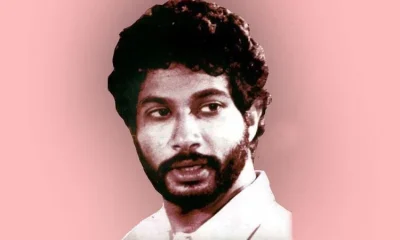
 Features7 days ago
Features7 days agoRichard de Zoysa at 67
-
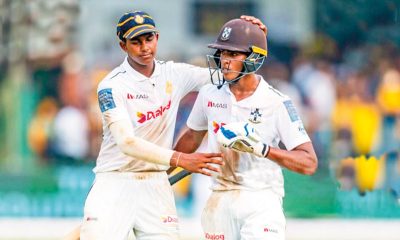
 Features4 days ago
Features4 days agoThe Royal-Thomian and its Timeless Charm
-

 News5 days ago
News5 days agoDPMC unveils brand-new Bajaj three-wheeler
-
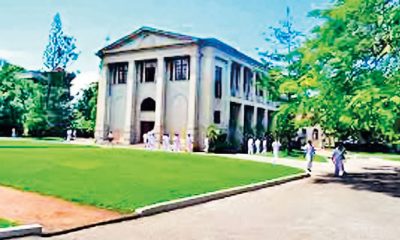
 Features4 days ago
Features4 days ago‘Thomia’: Richard Simon’s Masterpiece
-

 Sports2 days ago
Sports2 days agoSri Lanka to compete against USA, Jamaica in relay finals
-

 Features7 days ago
Features7 days agoSL Navy helping save kidneys
-
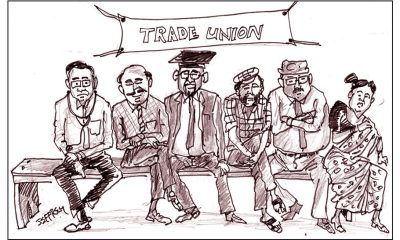
 Features6 days ago
Features6 days agoWomen’s struggles and men’s unions











